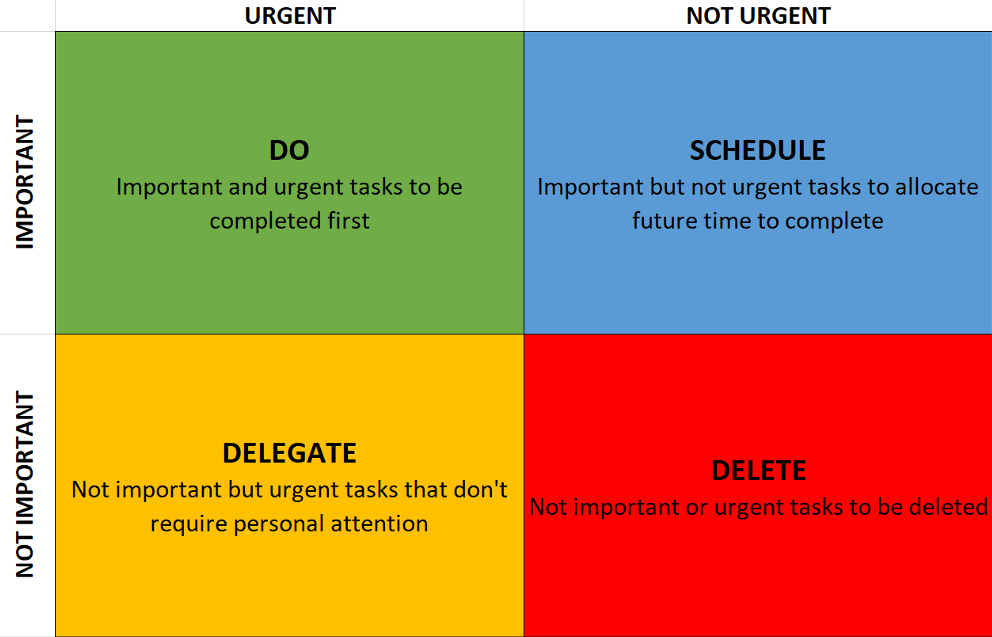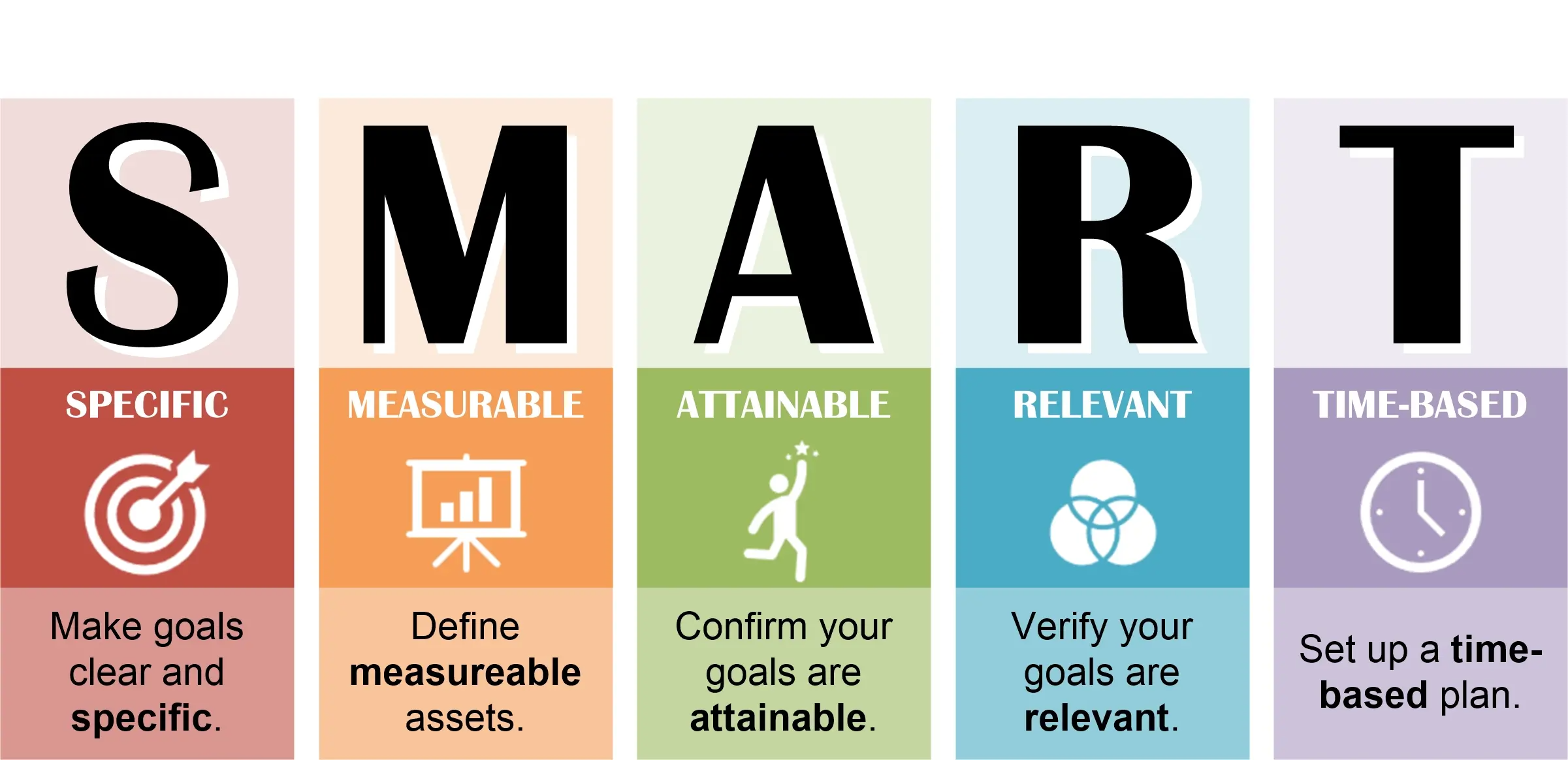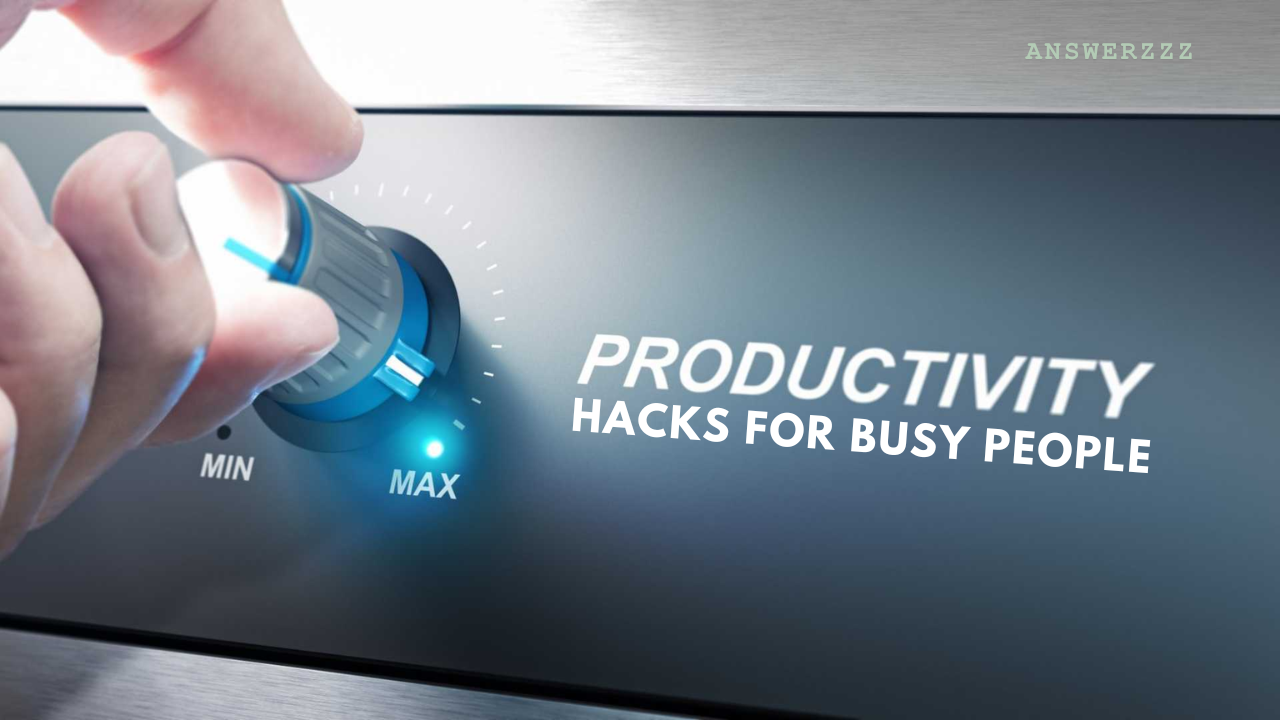In today’s fast-paced world, everyone seems busier than ever before. With endless to-do lists, demanding jobs, and personal commitments, many people feel like there are simply not enough hours in the day. However, improving productivity is not about working harder or longer; it’s about working smarter. This article will explore powerful productivity hacks for busy people, showing how you can get more done in less time without burning out.
1. Prioritize Your Tasks with the Eisenhower Matrix

One of the best ways to start improving your productivity is to prioritize your tasks. Not all tasks are created equal, and some are more urgent or important than others. This is where the Eisenhower Matrix comes in handy.
The Eisenhower Matrix helps you classify tasks into four categories:
- Urgent and Important: Tasks that need immediate attention. Examples include meeting deadlines or dealing with emergencies.
- Important but Not Urgent: These tasks contribute to long-term goals and should be scheduled, such as personal development or strategic planning.
- Urgent but Not Important: Tasks that can be delegated. These might include interruptions or non-critical meetings.
- Neither Urgent nor Important: These are time-wasters that should be minimized or eliminated. Examples include unnecessary browsing or social media.
By focusing on tasks that fall in the “Important but Not Urgent” category, you can plan proactively instead of constantly reacting to emergencies.
2. Time Blocking: Schedule Your Day Like a Pro
Time blocking is a productivity technique where you break your day into specific blocks of time for each task. Instead of multitasking or working aimlessly, you set aside dedicated periods for focused work. For example, you could block 9:00-10:30 AM for answering emails, 10:30-12:00 PM for project work, and 1:00-2:00 PM for meetings.
This strategy helps you allocate time effectively, avoid distractions, and ensure you’re consistently making progress on key projects. It’s particularly useful for busy people because it reduces decision fatigue, allowing you to move from one task to another seamlessly.
3. Follow the 80/20 Rule (Pareto Principle)
The Pareto Principle, also known as the 80/20 rule, suggests that 80% of results come from 20% of efforts. Applying this to productivity means that a small portion of your tasks likely drives the majority of your success.
To use the Pareto Principle effectively:
- Identify the few tasks that contribute the most to your productivity.
- Focus on those high-impact tasks.
- Minimize time spent on low-impact activities that don’t significantly move the needle.
By focusing on the 20% that matters most, you can achieve better results with less effort.
4. Use the Pomodoro Technique for Deep Work
The Pomodoro Technique is a time-management method that involves working in focused intervals (usually 25 minutes), followed by a 5-minute break. After completing four “Pomodoros,” you take a longer break (15-30 minutes).
This technique is excellent for maintaining focus and avoiding burnout because it balances periods of concentration with short, restorative breaks. It’s particularly effective for busy individuals who need to maintain high levels of productivity without depleting their mental energy.
How to implement the Pomodoro Technique:
- Pick a task.
- Set a timer for 25 minutes.
- Work on the task until the timer rings.
- Take a 5-minute break.
- Repeat the cycle and take a longer break after four sessions.
5. Embrace Single-Tasking over Multitasking
Many people believe that multitasking is a productive way to get more done in less time. However, studies have shown that multitasking often leads to lower productivity because it divides your focus. Instead of doing many things poorly, try single-tasking, where you focus on one task at a time.
To practice single-tasking:
- Eliminate distractions (e.g., turn off notifications, close unnecessary tabs).
- Set specific goals for each task.
- Use time-blocking or the Pomodoro Technique to stay focused.
- Reward yourself after completing tasks to maintain motivation.
6. Master the Two-Minute Rule
Building Resilience: Strategies for Mental and Emotional Well-Being
The Two-Minute Rule, inspired by David Allen’s “Getting Things Done” methodology, is a simple but effective productivity hack. The idea is that if a task takes less than two minutes to complete, do it immediately instead of postponing it.
Small tasks, such as answering a quick email, filing a document, or returning a brief phone call, can pile up if left undone. By adopting the Two-Minute Rule, you can quickly eliminate these minor distractions, freeing up more time for bigger tasks.
7. Leverage Technology to Automate Repetitive Tasks
Automation is a game-changer for busy people. By automating repetitive tasks, you can free up time for more important and value-added activities.
Here are some ways you can automate daily tasks:
- Email Filters: Set up filters to automatically sort incoming emails.
- Task Management Apps: Use apps like Todoist, Trello, or Asana to keep track of tasks and set reminders.
- Automated Scheduling: Tools like Calendly can automate the process of scheduling meetings.
- Smart Home Assistants: Devices like Amazon Alexa or Google Assistant can help you set reminders, manage shopping lists, and more.
By taking advantage of automation tools, you can drastically reduce the time spent on mundane tasks.
8. Set Clear Goals Using SMART Criteria

One of the reasons people fail to be productive is that they don’t have clear goals. Setting SMART goals—Specific, Measurable, Achievable, Relevant, and Time-bound—ensures that you know exactly what you need to accomplish and by when.
Example of a SMART goal:
- Instead of saying, “I want to exercise more,” say, “I will run for 30 minutes, three times a week, for the next month.”
This kind of goal is specific, measurable, achievable, relevant to your health, and time-bound. Having clear, actionable goals keeps you focused and motivates you to keep going.
9. Break Larger Tasks into Smaller, Manageable Chunks
Large tasks can feel overwhelming and cause procrastination. To overcome this, break big projects into smaller, more manageable steps. This approach, often called chunking, helps you focus on completing one piece at a time, making it easier to start and maintain momentum.
For example, if you’re writing a report, break it down into smaller tasks like:
- Researching the topic.
- Outlining the report.
- Writing the introduction.
- Writing each section.
- Proofreading.
By focusing on each smaller task, the overall project becomes less daunting, and you’ll be more likely to complete it efficiently.
10. Take Care of Your Health: Sleep, Nutrition, and Exercise
Hydration Hacks: How to Drink More Water and Improve Your Health
Productivity is closely tied to your physical and mental health. Without proper sleep, nutrition, and exercise, your energy levels will suffer, and so will your productivity. Busy people often neglect their health, but doing so can lead to burnout, fatigue, and reduced efficiency.
Tips for maintaining health and productivity:
- Sleep: Aim for 7-8 hours of sleep each night to ensure your mind is well-rested and alert.
- Nutrition: Eat balanced meals that provide sustained energy, such as whole grains, lean protein, and healthy fats.
- Exercise: Regular exercise boosts mood, reduces stress, and improves focus. Even short bursts of physical activity, like a 15-minute walk, can make a difference.
By prioritizing your health, you’ll have more energy and mental clarity to tackle your tasks efficiently.
11. Learn to Say No
Being productive doesn’t just mean doing more—it also means avoiding unnecessary tasks. Learning to say no is an essential skill for busy people. If you’re constantly agreeing to take on more work, attend meetings, or help others with their tasks, you’ll spread yourself too thin.
Instead of automatically saying yes, evaluate requests based on your priorities and current workload. If something doesn’t align with your goals or is not urgent, don’t be afraid to politely decline. Saying no helps you protect your time and focus on what matters most.
12. Delegate and Outsource
Many busy professionals fall into the trap of trying to do everything themselves. However, smart delegation can help you get more done. Identify tasks that can be outsourced or delegated to others—whether it’s hiring a virtual assistant, asking a colleague to handle a project, or using a cleaning service for your home.
By freeing up time from low-priority tasks, you can focus on the things that require your unique expertise and attention.
13. Use the 5-Second Rule to Beat Procrastination
Procrastination is one of the biggest enemies of productivity. The 5-Second Rule, created by Mel Robbins, is a simple yet effective way to overcome it. The rule is: When you have an impulse to act on a goal, count down 5-4-3-2-1, then take action.
This short countdown shifts your focus from hesitation to action, breaking the cycle of procrastination. Whether it’s starting a report, making a phone call, or getting out of bed in the morning, the 5-Second Rule can help you take immediate action.
14. Review and Reflect on Your Day

Finally, take time at the end of each day to review your progress and reflect on what worked and what didn’t. Ask yourself:
- What did I accomplish today?
- What could I have done better?
- How can I improve tomorrow?
By conducting daily reviews, you can identify areas for improvement, adjust your strategies, and continuously refine your approach to productivity.
Being productive as a busy person isn’t about working yourself to exhaustion. Instead, it’s about using smart strategies to make the most of your time and energy. By prioritizing tasks, using time-management techniques like the Pomodoro method and time blocking, leveraging automation, and taking care of your physical and mental well-being, you can significantly boost your productivity and achieve your goals with less stress. Incorporate these productivity hacks into your routine, and watch how much more you can get done in less time.




